|
"In every job that must be done there is an element of fun." - Mary Poppins Gamification (also referred to, sometimes interchangeably, as game-based, game-inspired, or game-centered learning) is something that I have written about in the past (such as this article) but not something that I have ever invested time into exploring or implementing. I refer to myself as a gamer, but a casual gamer rather than a hard-core gamer. I will happily escape into (at the moment) the Uncharted world and pretend that I am a treasure hunter, relax into some low-cognitive load FIFA18, or watch my wife play the incredibly beautifully written Final Fantasy series and marvel at how far computer graphics have come in the last thirty years. Take ninety seconds and watch the below video which shows the original Final Fantasy released in 1987 and reminisce about how amazed we were at the time to see these little pixels moving about the screen controlled by us, and then compare it to Final Fantasy 15 released in 2016 and marvel at how photorealistic much of the scenery is, the change in the music quality etc. However, gamification is not something that I have ever explored more deeply. I had my hands full on developing my pedagogy and classroom management. It was exciting to see that someone I know, Pete Whiting, was facilitating the gamification component of the Flipped Learning Certification Level II course. Flipped learning is the meta-strategy that supports other pedagogical approaches and Pete makes a very interesting comment early on that he could not see how they could get to gamification without using flipped learning as the backbone as flipped learning allows for the decentralisation of the classroom (i.e. the teacher does not need to be at the front of the class) that is needed for gamification to be implemented. Gamification, implementation of game mechanics, is also more familiar to us and students than we realise and this makes it easy to implement from an explanatory perspective. Think about your loyalty and rewards cards; buy nine coffees and get the tenth or similar. That is gamification of commerce. It is important to note that merely changing the mechanics from do this for an A to do this for 10XP is not in itself gamification. Gamification requires more thought than that and needs to be implemented well for it to be effective, both as a tool to generate engagement and as a tool for learning. This comes across in Yu-kai Chou's TEDx talk above when he comments that all games have some form of points, badges or leaderboards, yet not all games are engaging. Gamification should be about changing the focus from academic ability to academic effort. When students can see that if they put in the effort to complete the mission and therefore get the loot and the associated XP, thus leveling up for the next mission or quest, that changes the way they think about learning. This has ramifications for the I'm no good at [insert subject] so I don't bother trying. When genuinely implemented, it changes that mindset to being about effort, not about how good they are at something. By engaging in the missions and learning through them those students will potentially become more comfortable with the topics and thus change their mindset and openness to further learning. It is witnessing the eureka! moment that makes, in some ways, teaching such a joy. Paul Andersen says in the below TEDx Talk that it is "[t]hat look of learning, trying something new and failing and trying it again is something that we aspire to see in the eyes of our kids" and I think it is interesting, and somewhat disheartening that when it comes to video games, children are happy to fail and try again over and over until they achieve success, but in the classroom, when it comes to academic learning, our children are often defeated and want the answer when they fail the first time. What has happened that this is so? One thing that really came through is how the feedback to students and the application of different expectations is critical. This is not particularly revelatory, however, the way in which it is implemented is tweaked. The explicit expectations around students success criteria for the missions, the effort required, is different. Rather than have one expectation for all students and when you complete the mission you get the XP, there are, if you will, different difficulty levels. Those who could be referred to as being good at the game of school might be put on the hard difficulty level and have different expectations to achieve the XP than the student who struggles with a concept. This helps, as Pete remarks, with rewarding effort rather than the genetics and home life. Jon and Pete are both quite clear that the pedagogy behind gamification is much deeper and broader than the scope for the gamification unit of the flipped learning certification allowed for and that to get a true understanding, more time an exploration through other sources would be needed. One which they recommended was Goblin.Education, an online professional learning course which goes through the elements of gamification in education through game-based learning. Pete's unit was a little bit more in depth and practical than what I had been exposed to on gamification in the past and is something that I now feel a bit more comfortable with using in the classroom than previously. If you wanted to hear what Pete had to say, then I would encourage you to click on the button above to register for the Level II flipped learning certification (after you have completed the level I certification). I have added Goblin to my list of courses to look at but for now, gamification is something that I do believe has a solid place in the classroom, when it is implemented well.
As always, thank you for reading.
0 Comments
“I am a child. I come to you, a teacher. I bring a whisper Can you hear the poem in it? Will you tell me what to think, Or show me how? Will you teach me answers, Or the symmetry of a question well composed?” – Carol Ann Tomlinson, I am child. Welcome back to my review of the 2016 iteration of the FutureSchools conference, where we are now on the final day. If you missed the previous article, you can find it here. The opening speaker for day three of the ClassTech conference stream at FutureSchools was Peggy Sheehy (@PeggySheehy) speaking under the title The Game Plan, and which I gathered from the agenda was a talk focusing on Gamification and game-based learning in education, a topic which I think has some interesting potential within the education sphere, but which is not on my radar at the present moment. I do need to make it clear from the outset that I did not know Peggy at all, and that I did have a number of takeaways from her presentation, but the fact that she disregarded her two-minute warning, and ended up finishing fifteen minutes overtime engendered a lot of anger and frustration in the room towards her. That said, I do feel that she had some significant things to say. Peggy opened with a snippet of a poem from Carol Tomlinson, which I have sourced online and included above. Peggy reminded us there are many children who enter our classroom feeling, for a variety of reasons, as though they are less than their peers and that she finds it odd that there are so many education conferences, with big-name keynote speakers, yet with so little representation from the core of the industry, the students. This is not a universal truth, yet it does hold a lot of weight, and this video below is the result of students creating a keynote address for the Net Generation Education Project. The video went viral very quickly, and Alan November (@globalearner) apparently told the group that if they shortened it to three minutes from the original length of just under six minutes, then he would viralise it world wide. The students eventual response was apparently that “….teachers expect us to sit through six hours of school, they can sit through a six-minute film.” This triggered a memory for me, of the time I recorded one of my teaching sessions, a forty-five minute session with a class of Stage Two students and how horrified I was when I realised how much talking I had done. We do, often, talk far too much as teachers. Peggy made the point that students, outside of school, are playing Minecraft, Assassin’s Creed, Call of Duty, World of Warcraft and a multitude of other high-quality games, yet we, as teachers, often get excited by something as low-tech as Classroom Jeopardy. This goes back to Stephen Lethbridge’s point that so much of what ends up in educational contexts, as a result of being popular in mainstream society, is a watered down version of the original concept that our students do not engage with in the same way that they would a high quality game. Peggy brought up the point that smart phones these days are more powerful computers than those which sent man to the moon, yet we tell students to leave them in their bags, depriving them and us of a potentially powerful learning tool, a point which I heard Richard Byrnes make in his keynote at FutureSchools last year. Peggy reminded us that the now common four-colour pen and calculators both used to be items which were commonly prohibited in classrooms. Switching concepts, Peggy stated that we “…need to stop the corporate handover of public schools…” and allow teachers to teach, a sentiment that I suspect Gary Stager (@GaryStager), with his frustration with educational corporations such as Pearson, would agree. Peggy continued by saying that educational game designers need to forget everything they know about school, and that when designing games, they need to know the content just as well as they know the gaming structure, with the only company whose educational games she had confidence in was Filament Games (@FilamentGames). She quoted John Paul Gee as having said that we need to “…stop asking if games belong in schools, but which games belong in schools.” It was at this point that we were beyond the time for Peggy’s presentation, and she continued to speak, giving us a Marc Prensky quote (“…don’t bother me now mum, I’m learning”) and invoking Seymour Papert, who apparently called computers “…the children’s machine.” The next quote, from John Seely Brown was an intriguing one for me, as someone whose wife was a long time player of the World of Warcraft game, he has apparently been quoted as saying “I’d rather hire a high-end World of Warcraft raid leader than a Harvard graduate; the raid-leader has the skills I need them to have.” The next statement was something I certainly agreed with, and I managed to get a quick picture of the slide. Peggy next spoke about responses she had from teachers to the question “what do educational game designers need to know?” There were a number of insightful and thought-provoking responses, but this particular response was the one which generated the most discussion at my table afterwards. Peggy reminded us that game designers are the modern-day bards and storytellers and that we need to demand more from them. Her final point was that the Jenkins Report found that while youth video game was significantly up, youth violence rates were down. I have been unable to find this report online to link to. If you find it, please send me the link via the comments section or via a Tweet.
Peggy finished up here, fifteen minutes overtime, with a discontented murmur running through the crowd and with the next speaker anxiously waiting to begin his presentation. While I was frustrated at the talk being overtime despite having been given a two-minute warning, finding it rude and disrespectful to the subsequent speaker (who had to rush through his presentation as quickly as he could), I did find Peggy’s talk to be interesting and it generated some food for thought. I will cover the following talk in tomorrow’s article. As always, thank you for reading, and please leave any comments, questions or concerns in the comments or contact me via Twitter. For the full list of articles in this series, please click here. “Rubrics are the death of curiosity” – Jennie Magiera Welcome back for part two of my review of Jennie Magiera’s master class, entitled Transforming School Culture: Curiosity Based Learning for Students AND Teachers. Click here to read Part One if you missed it. After returning from the morning break, Jennie returned to the exploration of Wonderable questions. Out of a class discussion around questions from a picture of a garbage truck emptying its contents at a rubbish dump, the what if question that emerged and captured the class’ interest most effectively was what if zombies are real and thought it would have been very easy to generate an entire unit of work based around that topic, Jennie continued exploring the question with the students, until they had generated a focus question; how can you survive the Zombie apocalypse? Jennie took a sidestep here, halting the discussion on the zombie apocalypse to talk about rubrics, leading with the statement that “[r]ubrics are the death of curiosity as they tell students how to wonder, how many lines or minutes to wonder in, what size font to wonder in and students stop wondering about anything outside the literal box of the rubric.” I found this intriguing and given the prescriptive nature of many rubrics I can agree. My initial instinct was to push back, mentally with my rubrics are not like that (I have a preference for single-point rubrics as outlined here by Jennifer Gonzales from Cult of Pedagogy), but I stopped myself to question why single-point rubrics are any different and was unable to answer the question. They may not be quite as prescriptive as multi-point rubrics, however, they still outline specific criteria with specific indicators of success and so they still serve as wonder-killers. Jennie turned us towards badging, which immediately turned my mind to gamification or game-based/inspired learning (which I have written about previously here). As with anything, Jennie told us, badging can be implemented brilliantly or disastrously, but the success of a badging program can be distilled into two areas; the frequency and the level of care. We were asked to consider how many loyalty or discount or frequent purchase cards we have in our wallet and how many of those we actually use on a regular basis. If, for example, you happen to purchase a coffee one day and are given a frequent purchase card of the after you purchase ten coffees, the eleventh is free is free variety, but you do not normally visit that coffee store, or you do not normally drink coffee, then the frequency of use is going to be low and you will not engage with the company meaningfully. This translates into badging in the classroom. If there is little to nor frequency of use or reference to the badging system or program then the students are unlikely to engage with the badging. This leads to care, which is itself based around two sub-factors. Jennie reminded us that there are lots of social situations with these structures that we participate in on a daily basis, particularly in the consumer market where companies make use of influencer marketing encourage people to engage with and purchase the new product. In the classroom context, prizes should be intangible for the sake of sustainability of the badging system (and for the sake of your wallet!), but there does need to be a shift, over time, towards social motivation. Social motivation can be achieved by gaining the support of the influencers in the classroom, as those students will be the ones with influence over the rest of the class and allow you to gain traction and the badging system to embed and become part of the class culture. As a side note, there is an interesting ethical discussion that could be had around this topic and the use of marketing tactics in the classroom in this manner. Jennie did also note that there needs to be a conscious decision as to whether the badges will be digital or physical and that there are plenty of options for both, including Mozilla OpenBadges, Schoology and Credly. As with many things creative in the classroom, you require an activator to set the scene, which, when working through the process of creating a badging system, can come from the task itself. Some of Jennie’s class created the below activator for the task, which was simply an image of a TV with a YouTube video over-layed in place of the TV screen, which was quite effective in generating ideas. Students are used to the structure of video games and the badging or achievement structures therein, and so instigating a badging system in the class, or for a particular unit of work is not necessarily that big a stretch for their imaginations, or for them to grapple with. Another way to gain buy-in is for the students to design the badges and the achievements required to achieve those badges themselves. This is a method that is more applicable to some tasks or activities than others. For the escape from the zombie apocalypse task, the end goal was fairly clear; to escape from the approaching zombies and survive. Knowing this end-goal allowed students to generate a range of achievements that would result in the awarding of an appropriately titled badge and so the students, in their teams, were required to create the badge or achievement title, what was required to achieve the badge, what the evidence would be that the achievement had been completed and the design of the badge and Jennie had us complete this task in our table groups. Here is a screencap of some of what my group came up with. Our group got right into this task, and we realised partway through that we had been going about it thinking as teachers, with some very prescriptive descriptions for what was required, but that what we were putting in the how to achieve it column actually belonged in the evidence column and that we had to rethink our approach. We managed to do this and came up with the above badges, plus some more which were on the next slide in our GSlides document. The next step was for us to complete the task, plan how to escape the zombies and also achieve our own badges, which we had to then make a two-minute presentation to the cohort about, and then using a GForm which Jennie had set up, had to rate how well each group’s plan would allow them to survive the zombie apocalypse and how achievable their badges were.
Jennie closed out session two by stating that the difference between badges and rubrics is that badges are open and based on choice, allowing students to choose what they do while rubrics are prescriptive and tell students what they need to do. Students can choose to continue to the higher level, whereas in a rubric a grade that is less than an A is perceived as a failure by the students. From this point, we went into our lunch break which makes this a convenient place to end this article. As always, thank you for reading, and feel free to leave a comment or contact me on Twitter if you have any further questions or thoughts regarding this article. Find the rest of the articles in this series by clicking here. “The most wasted of all days is one without laughter.” – Attributed to Nicolas Chamfort As we approach the end of term, activity tends to wind down as loose ends are tidied up and teachers are reluctant to start anything new, knowing that there is a two week break coming up which will ruin any sort of flow. With that in mind, I took the opportunity today to visit a tool that I had heard about, and seen, but not utilised myself; Kahoot. Rather than attempt to explain or describe what Kahoot is, here is a video showing you, thanks to Jason Cross over on YouTube. I found and used a Digital Citizenship Kahoot with some of my classes today as slightly different form of assessment, and the students absolutely loved it. I completely underestimated how excited they would get by it. Even the simple fact of the screen changing colours was a source of amusement to them. The Kahoot generated some interesting conversation as there were some answers that were a bit nuanced and required them to be read properly. A conversation with a colleague in the staffroom during the morning break led him look it up, and as I went back to the room I am using this week, I passed him room and saw a class full of highly engaged and motivated students, working in teams to complete the quiz. A small joy that a brief conversation could provide something useful to a colleague. What was your source of small joy this week? What brought a smile to your face? “Minecraft is not a game, it’s a toy.” – Bron Stuckey My alarm went off at 5.30am Tuesday morning, and I rolled out of bed, ready for the ninety minute train ride back down to the Australian Technology Park in Sydney. The structure of day two was slightly different. Session one was the same, with two presentations followed by a morning tea break. The session between morning tea and lunch, however, would consist of all the conference streams coming out from their conferences and taking part in a series of roundtables. Delegates had seventeen different roundtables to choose from, across three different thirty minutes slots. The round tables were followed by the lunch break, which led into session three consisting of two more presentations, the afternoon tea break, and then the final presentation of the conference. After a welcome back for day from chairperson Sue Waters, the day began with the keynote presentation by Bron Stuckey titled Game Inspired Learning – how it offers us a chance to change the paradigm. Game inspired learning is a concept that I have heard discussed, under the banner of ‘gamification’ and I was curious to hear what it was all about, in more depth and from someone who has put the concept into practice. Bron was very quick to break Game Infusions Learning down into three areas; game design, game-based and game inspired learning and to discuss the subtle difference between the three areas. Bron listed two distinct points for each of the types of game infusion learning. Game design is about engagement through design, wherein students are involved in designing games as part of the curriculum. Game based learning is about engagement through game play, where games are brought into the curriculum. Game inspired learning, often termed gamification is about engagement that is guided by elements of, or as Bron termed them, ‘atoms’ of gaming being brought into the learning structures, where a gameful approach to the curriculum is mapped out. Bron provided some examples of applying ‘game atoms’ (game-inspired learning) to non-game situations, which you can see below. Bron also provided some examples of Game based learning, where game attributes are brought into the curriculum. Two of the examples Bron mentioned were Murder Under the Microscope and Atlantis Remixed, both of which feature a variety of game attributes (including narratives, avatars, levelling, economy, cascading information, feedback, prizes/badges/points, virtual goods, friending) and are game inspired ways of learning curriculum concepts and skills. There were a number of other game inspired platforms mentioned, including Duolingo, Race to the White House, Undergrad Life run by the Rochester Institute of Technology, and a degree that has been structured using game-inspired principles run by Concordia university, as well as a game-inspired professional development platform and 3D GameLab. Bron also stressed that being game-inspired is not necessarily synonymous with being digital. If game attributes are applied to a learning context, then it does not matter whether it is being done in the digital environment, or in the real environment. Bron then moved onto the question that I suspect most people were wanting the answer, or at least some insight, to; how to get started. Bron listed four signals types that may indicate a benefit from utilising a game infusion approach, which you can see below. If any of those four signals are present, then utilising game-design, game-inspired or game-based learning may be a viable and productive option. There are, of course, some potential pitfalls to be aware of. At the end of the day, you arenot building an actual game, you are creating a learning environment with some atoms or attributes of gaming, so it does not need to look and feel like a game necessarily. A few strategies that Bron has noticed increase the chances of successfully implementing game-inspired learning being a gamer yourself (I have that box ticked), leveraging your students current knowledge as to what they like in a game, and utilising platforms such as 3D GameLab to help build the learning structure. My key learning from hearing Bron speak was that game inspired learning as not as daunting is it sounded or felt, and that in many ways, many of us are likely already utilising some elements of gaming in much of our pedagogical techniques. “You don’t start the creation of a new amazing building with a tool. You start with a design. So why on earth would you start the creation of an amazing learning experience with an app?” –Paul Hamilton Following on from Bron, was Paul Hamilton, with a presentation titled Augmented Reality in Education. I had had no experience at all with AR prior to hearing Paul talk, but what he showed me left me somewhat curious. I think that AR holds some potential, but that you would need a significant amount of professional development to effectively implement it. Paul was quick to differentiate AR and VR from each other. Where VR is immersion in a different, a virtual world, AR is augmenting what we see, by adding an additional layer over the top. Paul showed us an example of what this can look like, via a video, which I have found on youtube and you can see below.  Afterwards, Paul discussed his first efforts to utilise AR, and that it was a complete flop. It had no impact because the lesson had been designed around the tool – the iPad and AR, rather than around the learning goal, and that Paul indicated that was something of a Eureka moment for him. Paul believes that we, as teachers, are creators and designers of learning and that when we design a learning experience around an app, that we negate all of our training. Paul indicated that he also utilises QR codes as part of the AR process as these are easier for students to utilise than hyperlinks written on a board, but that anecdotal evidence indicates greater learning retention and application from utilising the AR as opposed to the QR codes. Paul also listed some of the apps that he recommends using for AR planning and programming, including Aurasma, Daqri, Layar and Blippar, as well as plugged his book, Augmented Reality in Education, which is available, free, in the iBookstore. The biggest key to success, according to Paul, was having a strong and genuine connection between the object of learning and the trigger. Paul believes that this is critical to a successful implementation of AR in education, and it does make sense. We say that learning must be genuine and authentic and significant to learners, and it is logical to apply this same thinking to the utilisation of any technologies in an educational setting. The next article will cover the Breakout and Round table sessions, which went until lunch, and maybe some observations from the expo itself. Thank you for reading, and as always, please leave a comment. I’d particularly love to hear if anyone has any experience with AR and/or Minecraft in the classroom. See here for the list of articles in this series. |
Categories
All
|
Support |
© COPYRIGHT 2015. ALL RIGHTS RESERVED.
|

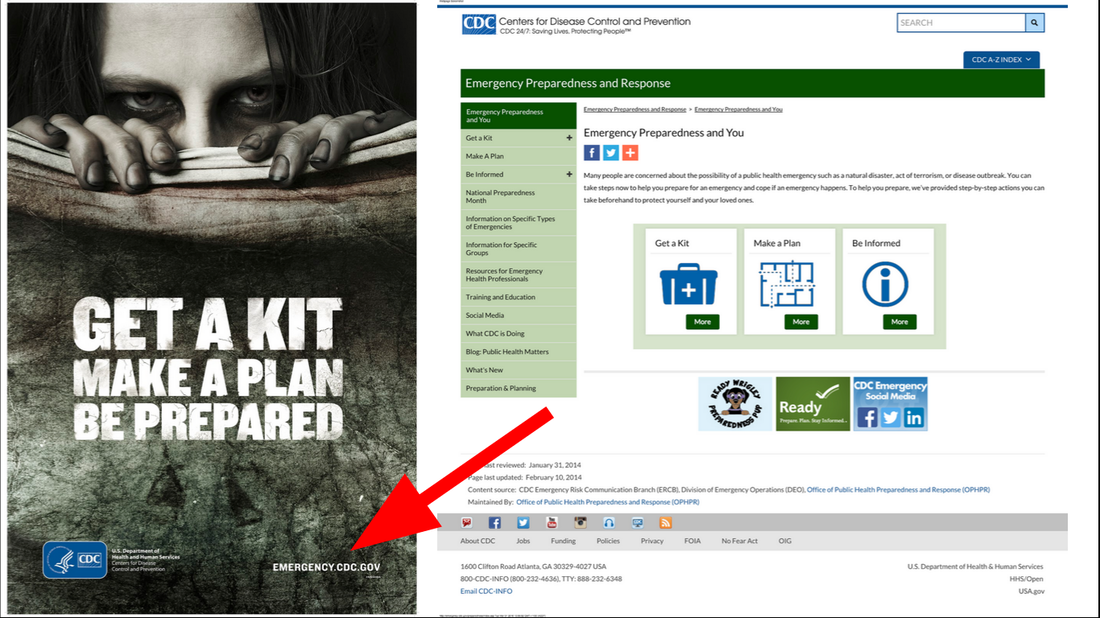
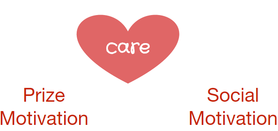
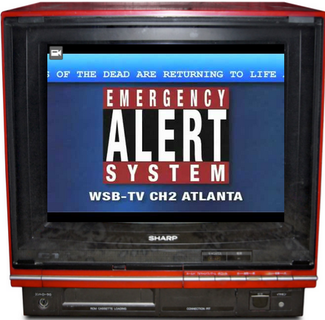
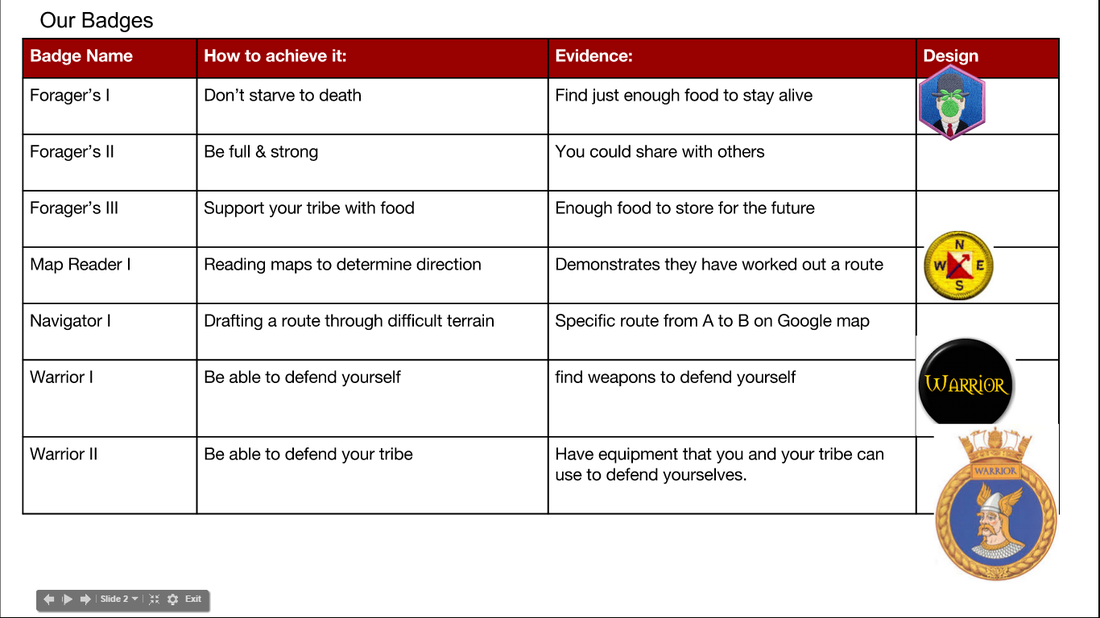

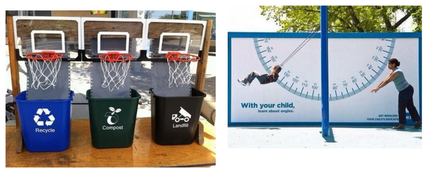
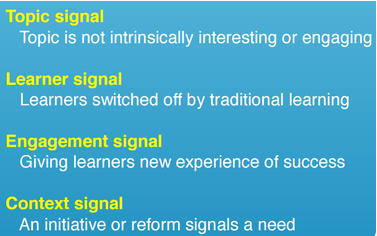
 RSS Feed
RSS Feed